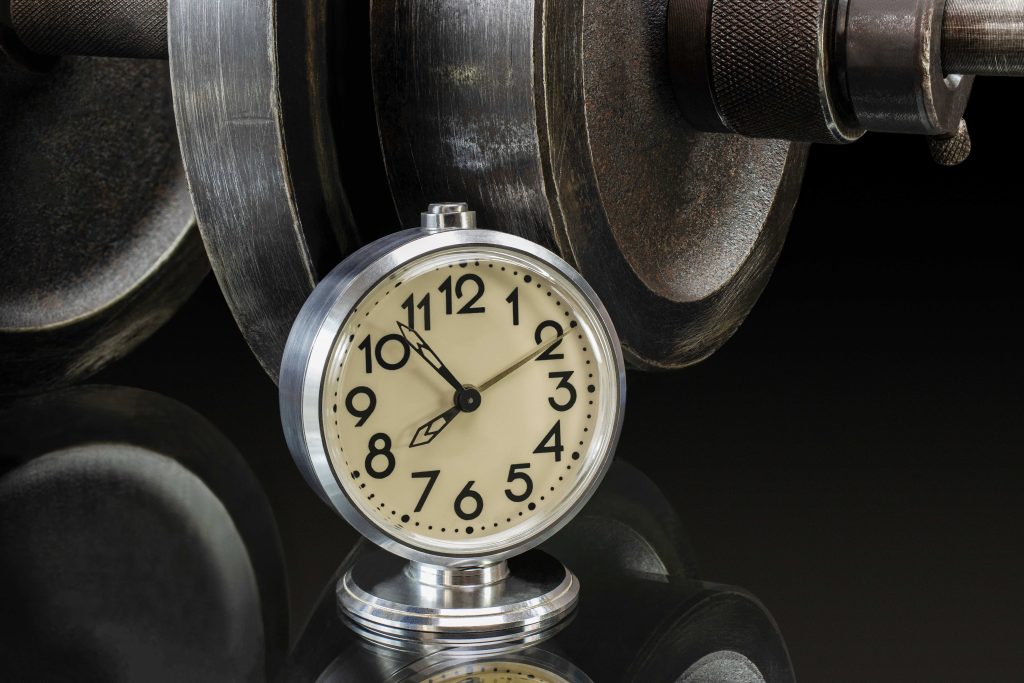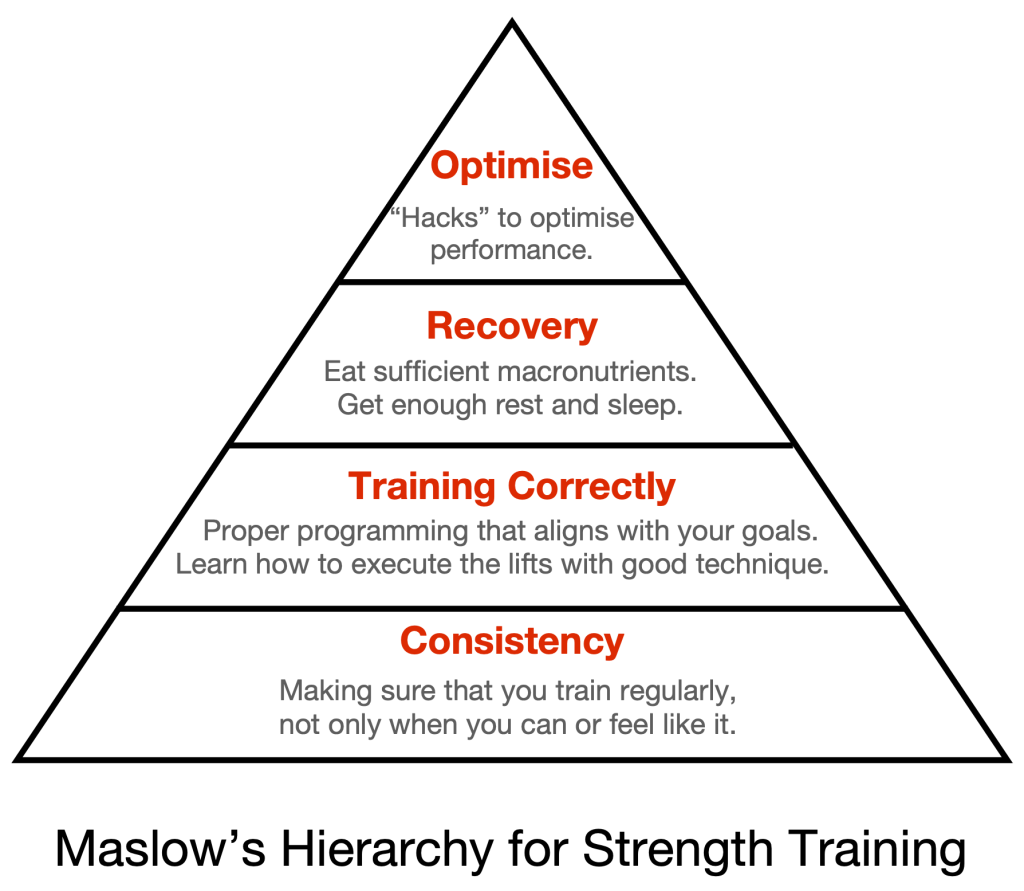
Browse through the internet/magazine shelf looking for training related information and it’s very likely you’ll come across titles that scream “Bio hacks to improve your performance in the gym!” or “Find out what the pros are doing to give yourself a performance edge”. Makes it sound like you can hack your way to incredible gains – all you’ve got to do is follow the advice that apparently only a select few people know. Pretty cool, right?
Ever heard the phrase “If it’s too good to be true, it probably is”? And it is too good to be true, indeed. In the big picture, these so-called tips are shiny but extremely minor things. Yes, these clickbait-y titles grab your attention, and some of these tips might actually work for a very tiny group of lifters. But for 99.9999% of lifters out there (which very likely includes you), it’s the boring old things that actually give you best results.
Throughout the years, we get asked lots of questions. Here are the 2 most common questions that we get with regard to “optimising” training:
Q: When’s the best time to train?
You’ve probably wondered if it makes a difference whether you train in the morning, afternoon or night.
Currently, most research shows that peak athletic performance is correlated with circadian rhythm. Circadian rhythm is the internal process that regulates the sleep-wake cycle that repeats roughly every 24-hour. Humans tend to perform best in the late afternoon to early evening (around 4–6 pm) when their core body temperature is at its peak. This is because higher body temperatures facilitate the actin-myosin cross-bridging process that drives muscle contraction (Facer-Childs et al., 2018). In other words, your performance should theoretically be better should you train during this time.
However, the same research also notes that most circadian rhythm studies haven’t really controlled for chronotype, i.e. whether you’re a night owl or an early bird. There’s actually significant variation when you take into account these individual differences in circadian timing. Early birds tend to peak earlier about 12 pm (or 5–6 hours after waking up), and night owls peak around 8 pm (11 hours after waking up) (Facer-Childs et al., 2018). Still, even within these categories, there are variations.
With all that being said, don’t worry too much about this. Depending on your preference, if you train too early, you might feel that your body’s not “awake”; if you train too late, you might have issues falling asleep later that night.
Most importantly, we all have commitments that we’re fitting our training around. If you have to be in the office by 8 am and can only train before starting work, then get up earlier to train. If you have to ferry the kids to and from school, and lunchtime is the only time you can fit training in, then train during lunch.
A: The best time to train is when you can
Consistency is the most important thing. The best program in the world, overseen by the best coach, won’t give you results if you’re not consistent in your training.
Quite a number of our clients used to travel a lot for work, and didn’t manage to train when they were overseas. Their performance would fluctuate – they’d make some progress, then regress when they travelled. For short trips of a few days to week, the fluctuations weren’t as pronounced. However, for longer trips (1-2 weeks and above), they would have to take a bit of weight off their previous session and work their way up again. If you’d like to find out more on how much weight to take off your previous after a training hiatus, here’s how to start training after a long break.
But when COVID hit and these clients couldn’t travel, they became very consistent. They trained consistently, and they’re now stronger than they’ve ever been.
No one time slot is better – I’d say the single most important factor would be your schedule. Train at a time slot that you can be consistent, and train consistently.
Q: What’s the best time to consume protein after training for the best gains?
It’s post-workout, and you’ve mixed up a protein shake. Hold on – should you drink it right away? You’ve got a big dinner in a couple of hours and you don’t want the shake to spoil your appetite. But, if you don’t take the protein now, will you “lose” gains and “waste” your workout?
Like you, lots of people want to know the best window to consume their protein shake to maximise muscle protein synthesis to get as much gains as possible. According to bro-science, one has to consume a protein supplement as soon as possible after training because of the anabolic window – the 30-minute or so period post-workout, that’s supposedly the best time for getting the most out of consuming protein.
If you’ve not been taking in your whey protein as soon as you finish your last set, no problem. There’s insufficient data to support the anabolic window theory. Currently, we know that muscle protein synthesis remains elevated for about 48 hours after a workout. Since it’s very unlikely that you’ll fast for 48 hours post-workout, just have your shake when you can.
A: Don’t worry about anabolic windows, just make sure you consume enough protein
Again, consistency is key. Forget about timing your protein shake, just get enough protein on a daily basis.
By enough, we mean a minimum of 1.6g of protein per kg of bodyweight. If you’re an active individual that trains hard, and/or an older adult, that number can go up to 3g of protein per kg of bodyweight. Ideally, you’re also eating between 3–5 meals a day, spread out evenly throughout the day.
If you want personalised help for planning your meals and getting nutritional advice, here’s our experience with a dietician.
Stop worrying about the minutiae
That’s what these two questions are really about – minutiae, or insignificant things. Yes, they might sound cool, because circadian rhythms and anabolic windows can be hyped up as the magic bullet for hacking your training and boosting your performance.
What’s boring to talk about is the consistency of regular training with proper programming, focusing on using good lifting technique and nutrition habits.
Because, for the vast majority of people, these “hacks” are fringe stuff. Unless you’re already close to your limit and trying to squeeze out every last drop of performance, these won’t make a difference, if at all.
For the normal person, the incremental advantage of focusing on these minutiae doesn’t matter, if your basics aren’t right.
Maslow’s hierarchy of needs, applied to training
In psychology, Maslow’s famous “Hierarchy of Needs” describes human motivation as hierarchical levels within a pyramid. The main idea is that the needs lower down in the hierarchy must be satisfied, before individuals can attend to the needs higher up. Thus, the lower needs are the basics that everyone must-have.
Here’s the same concept, applied to strength training:

As a rule: Make sure you’ve fulfilled a particular level before moving up to the next level.
In our diagram, the bottom-most level is consistency. You can have the best training program, written by the best coach, but it’s useless if you’re not consistent. Consistency basically means that you show up and train regularly. It doesn’t matter what time of the day you train, so long as you do it. Keeping a training log will help you track your sessions.
Once you’ve committed to regular sessions in the gym, the next thing to focus on is to make sure that your training is aligned with your goal. Here’s where programming and technique comes into play. Not much use being training consistently if your training program isn’t bringing you closer towards your goal.
Next up is recovery. We’ll start with food. The correct amount of macronutrients won’t matter if you’re not imposing enough training stress to drive a training adaptation in your body. Eating all the necessary protein won’t get you stronger or build muscle, if you don’t impose a training stress that tells your body to get stronger and build muscle. That’s why ads that promise bone-building when you consume their high calcium products are bullshit… but I digress.
Rest is also on this level. When we talk about rest here, we’re talking about the time between each training session, not the rest time between each set. After imposing a training stress, one must recover from said training stress so that adaptation can occur. Train consistently, train properly, eat right but only sleep 4 hours a night? That’s a good way to blunt your progress.
Right on top is optimisation, where you try out little “hack” to try and to squeeze out that extra few percent of performance. Here’s where peripheral things might come into play. But, these are only really for the people at the top of their game – you’re probably not one.
Yes, we’re repeating ourselves, but it needs to be said again: optimising the little things like training time, the best time to eat, etc, doesn’t matter if all the other things below aren’t already in place.
Get your priorities right
The best program is useless unless you’re committed and consistent with it. What time you train doesn’t matter… as long as you get it done. Make sure you down a protein shake right after training isn’t important… as long as you get enough per day.
So stop overthinking the small things. Get your priorities right, focus on the basics, and pretty much ignore everything else. You might just find yourself progressing faster.
Can’t stick to a schedule, or are constantly distracted? Having a coach is one of the best ways to stay consistent. Talk to us, and learn how to focus on training and start making progress towards your goals.
- Facer-Childs, E.R., Boiling, S. & Balanos, G.M. The effects of time of day and chronotype on cognitive and physical performance in healthy volunteers. Sports Med – Open 4, 47 (2018). https://doi.org/10.1186/s40798-018-0162-z

